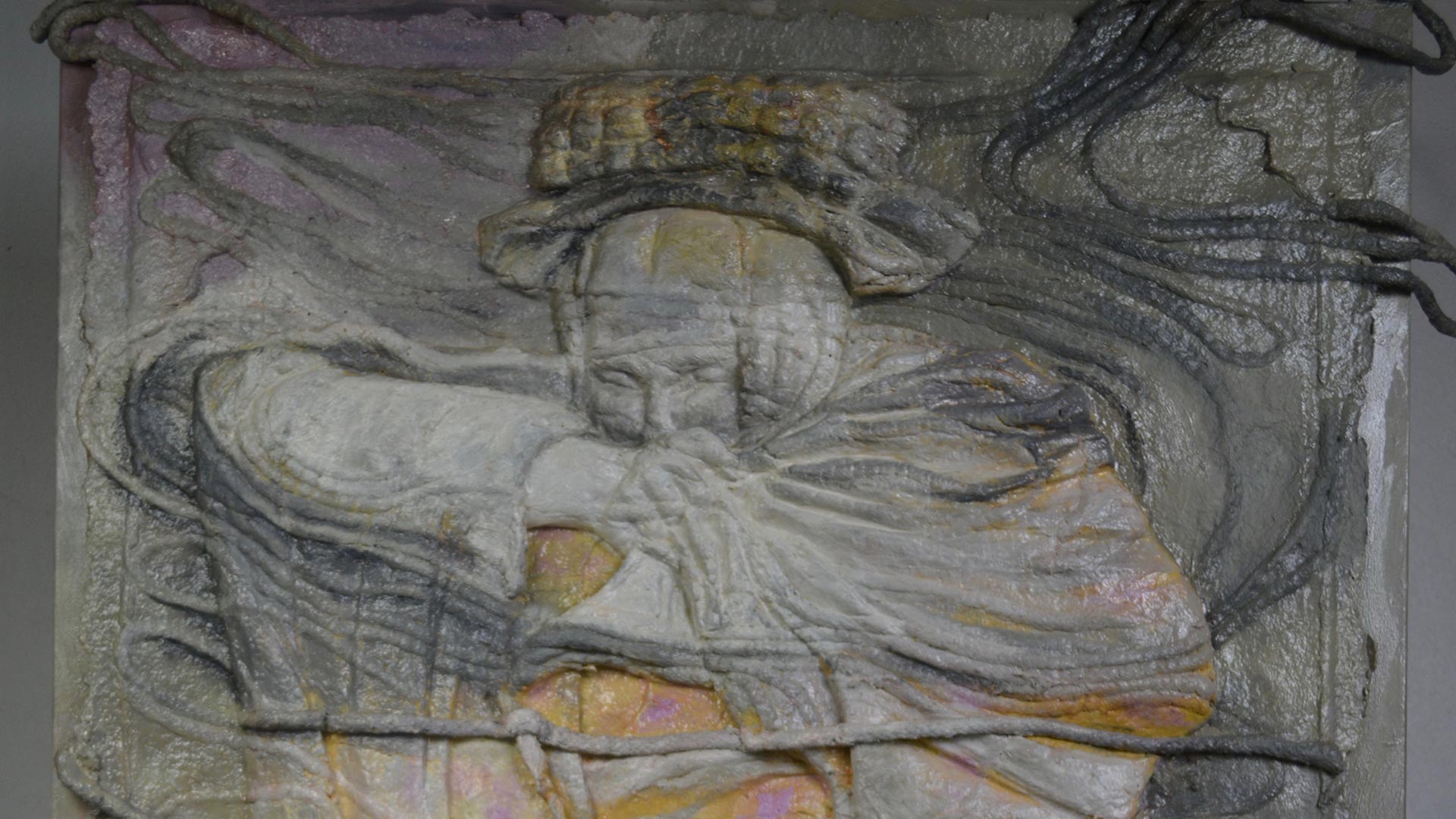- Future Students
- How to Apply
- Visit UHCL
- Admitted Students
- Tuition, Costs and Aid
- Degrees and Programs
- Contact Admissions
- Current Students
- Class Schedule
- Academic Calendar
- Advising
- Events
- Library
- Academic Resources and Support
- Student Services and Resources
- Alumni
- Lifetime Membership
- Alumni Events
- Update Your information
- Awards and Recognitions
- Give to UHCL
Exhibition on climate change: 'We are all being affected'
April 29, 2021 | UHCL Staff

The natural world has been a source of inspiration for artists since the beginning of time. For Houston artist Jo Zider, her feelings about the environmental perils associated with climate change are most powerfully channeled through her art.
Her exhibition, titled "Earth at the Edge," is a collection of 15 relief paintings to be displayed at University of Houston-Clear Lake's Art Gallery, opening May 17 and running through June 25.
"Climate change is a main area of my expression. I'm very inclined to appreciate Native Americans and their approach to nature," Zider said. "The work I've created in this exhibition is centered on climate change. It's real, and we are all being affected."
All 15 pieces in the exhibition, explained Zider, relate back to three archetypes: grief, blame and hope.
"All the images start with cotton lenter castings into silicon rubber molds to produce a 54-inch kabuki figure that embodies the three archetypes of grief, blame and hope," she said.
Each kabuki figure represents her feelings about a current issue pertaining to climate change. "When I studied ceramic art I found that I really loved the brush work on classic Japanese pieces, and I tried to emulate them," she said. "That's where my attraction to Japan started. I began developing vessel forms, manipulating them more, and they finally turned into these figurative pieces."
Her ideas evolved as she continued learning more about kabuki, and working with the materials necessary to express them. "As I developed the three different designs, I started seeing the archetypes — grief, blame and hope — and I saw the parallels to what's happening in the world now."
One of the first images she created is called "Exploited," an archetype of grief.
"It is the face of Ken Saro-Wiwa, a member of the Ogoni people in Nigeria," she said. "Shell Oil came into Nigeria and drilled for oil, and in the course of their exploration, they polluted the resources of the land, especially in the area where Ken Saro-Wiwa lived."
Saro-Wiwa became the spokesperson for the Movement for the Survival of the Ogoni People, and led a campaign against the environmental degradation of Ogoniland. "He protested, even went to the United Nations," Zider said. "When he returned to Nigeria, he was arrested and hanged for treason."
The casting of his face on the kabuki figure conveys Zider's sense of grief over the destruction of that land and the execution of Saro-Wiwa. "His story became compulsive for me," she said. "I needed to create something to express what I felt about what happened to him."
Her representation of the "hope" archetype is a tree. "In that figure, the message is that nature's way will prevail and save us, if we use it thoughtfully," she said.
"I've represented 'blame' as a figure sitting in a beautiful, upholstered chair in the White House, with an American flag flying among exhaust and air pollution from refineries in the background, with an oil drum spilling out blood in the foreground," she continued.
Zider explained that she finds these stories devastating and seeks them out so she can create her own particular representations. "There will never be any justification for these things," she said. "The stories are repeating — oil companies are still exploiting resources in other countries; native peoples are still fighting for their land. That is the message of this exhibition."
For more information about UHCL's Art Gallery, go online.






